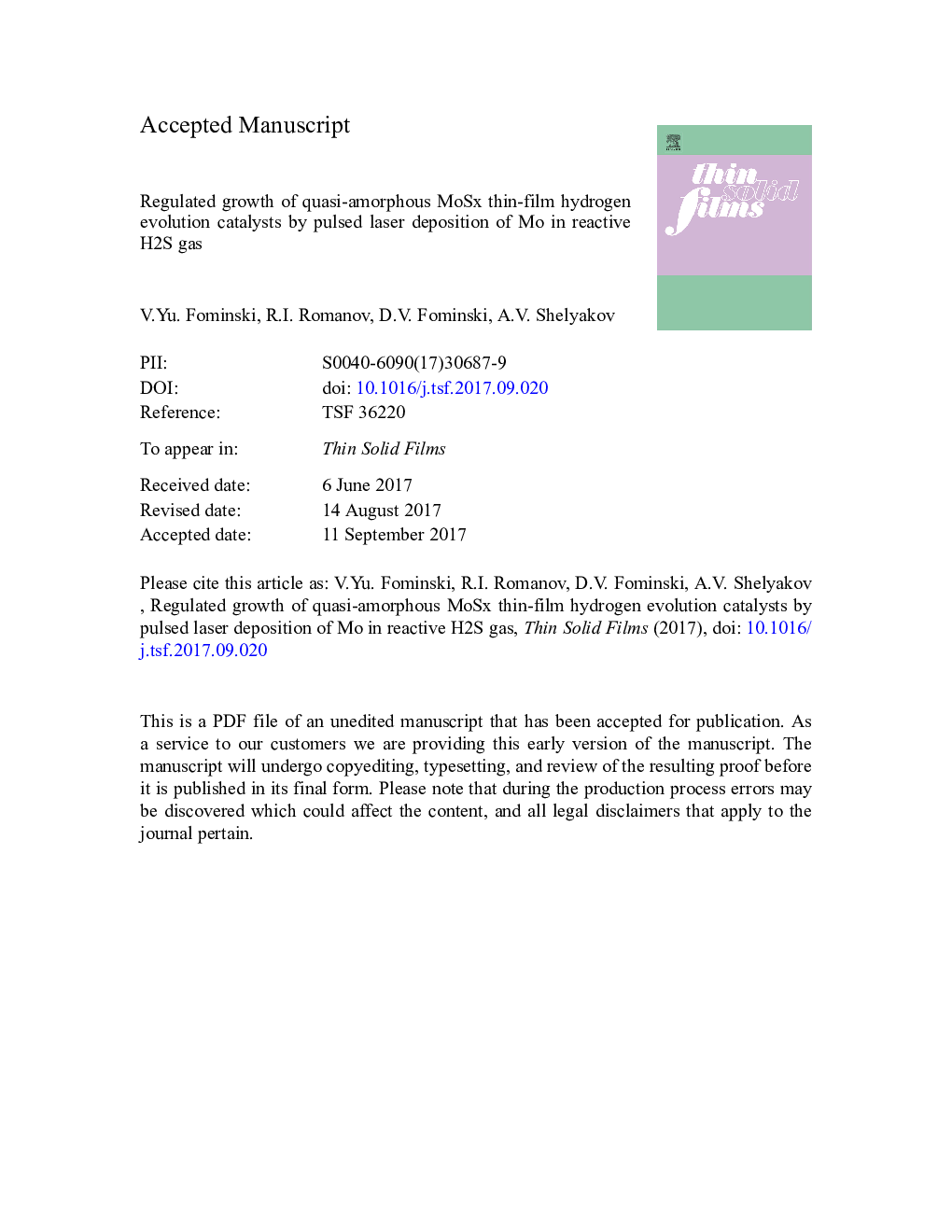| Article ID | Journal | Published Year | Pages | File Type |
|---|---|---|---|---|
| 5465716 | Thin Solid Films | 2017 | 35 Pages |
Abstract
We report the preparation of MoSx thin films with reactive pulsed laser deposition (RPLD), an original technique that allows us to investigate the correlation between key MoSx properties, such as the composition, morphology, and local structure, and the catalytic performance in the hydrogen evolution reaction (HER). The use of two geometries of normal angle (NA) and sliding angle (SA) for the deposition by laser plume from a Mo target on a glassy carbon substrate made it possible to regulate the characteristics of MoSx films (1.5 â¤Â x â¤Â 10) by varying the H2S pressure and thus to circumvent the limitations inherent in traditional pulsed laser deposition. Amorphous MoSx < 2, quasi-crystalline layered MoS2, disordered as well as rather perfect Mo3-S clusters, and sulfur clusters were formed. The films containing locally ordered clusters with a higher content of bridging S22 â and apical S2 â ligands could be prepared by SA RPLD. This film was demonstrated to be the most efficient electrocatalyst, possessing a lower overpotential of â 130 mV at a current density of â 1 mA/cm2, a Tafel slope of 44 mV/dec, and a quite high exchange current density of ~ 1.2 μA/cm2. The preparation of a low-resistance MoSx underlayer by NA RPLD made it possible to increase the catalytic performance of a bilayer coating by 10%.
Keywords
Related Topics
Physical Sciences and Engineering
Materials Science
Nanotechnology
Authors
V.Yu. Fominski, R.I. Romanov, D.V. Fominski, A.V. Shelyakov,
